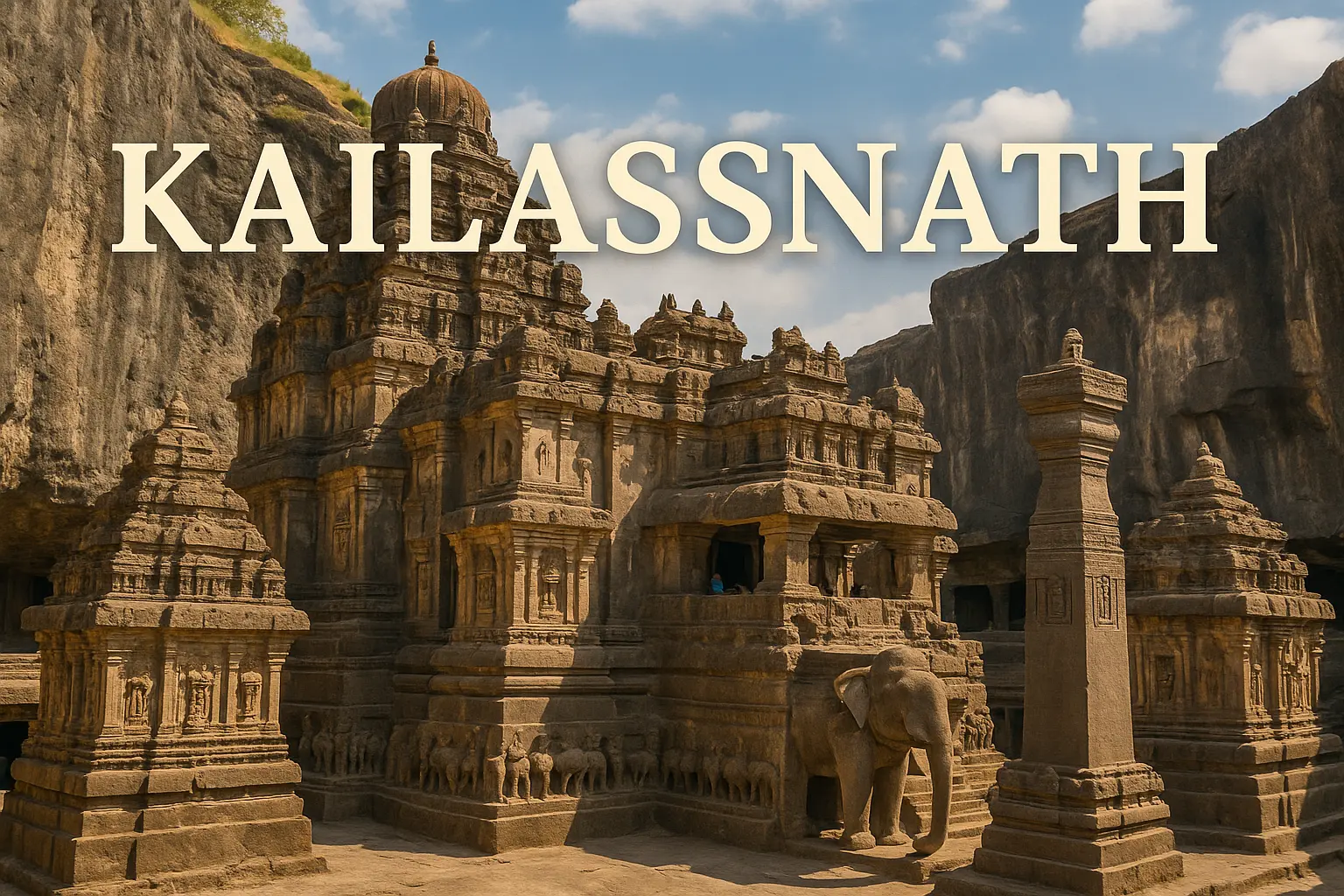Kailashnath Shiva Temple: The Architectural Marvel of Ellora 🛕
Discover Kailashnath Shiva Temple, a UNESCO World Heritage Site in Ellora. Plan your visit with our 2000+ word guide to architecture, rituals, and more at Kailashnath Shiva Temple! 🙏
Aditya Pandey

Nestled in the heart of the Ellora Caves in Maharashtra, India, Kailashnath Shiva Temple (Cave 16) stands as a testament to ancient Indian artistry and devotion to Lord Shiva. Carved out of a single monolithic rock in the 8th century, this UNESCO World Heritage Site is one of the most remarkable rock-cut temples in the world. Kailashnath Shiva Temple is renowned for its intricate carvings, grand architecture, and spiritual significance, attracting historians, pilgrims, and tourists alike. Dedicated to Lord Shiva, the temple is a centerpiece of the Ellora Caves, a complex blending Hindu, Buddhist, and Jain monuments. This comprehensive 2000+ word guide explores the history, architecture, spiritual importance, rituals, and nearby attractions of Kailashnath Shiva Temple, offering a detailed resource for planning your visit. Whether you’re a devotee, an architecture enthusiast, or a traveler, Kailashnath Shiva Temple promises an awe-inspiring experience. 🌿
Why Visit Kailashnath Shiva Temple? 🌄
Kailashnath Shiva Temple is a masterpiece of Indian rock-cut architecture, often described as a wonder carved from a single stone. Built during the Rashtrakuta dynasty, it represents the pinnacle of ancient engineering and devotion to Lord Shiva. The temple’s massive scale, detailed sculptures, and serene ambiance make it a must-visit for those exploring India’s cultural heritage. Kailashnath Shiva Temple is not only a spiritual hub but also a historical treasure, offering insights into the syncretic culture of medieval India. Its proximity to other Ellora Caves and attractions like Ajanta Caves and Daulatabad Fort enhances its appeal. Whether you’re seeking divine blessings, architectural marvels, or a journey through history, Kailashnath Shiva Temple delivers an unforgettable experience. 🕉️
Historical Significance of Kailashnath Shiva Temple 📜
Kailashnath Shiva Temple, constructed between the 8th and 9th centuries CE under the Rashtrakuta dynasty, is a monumental achievement in rock-cut architecture. Commissioned likely by King Krishna I, the temple was designed to resemble Mount Kailasa, Lord Shiva’s mythical abode. The construction involved carving out 200,000 tons of volcanic basalt rock from the top down, a feat that required extraordinary skill and planning. Kailashnath Shiva Temple reflects the Rashtrakutas’ patronage of Hinduism, though the Ellora Caves also house Buddhist and Jain monuments, showcasing religious harmony. Inscriptions and historical records suggest the temple took decades to complete, with artisans meticulously sculpting every detail. Kailashnath Shiva Temple remains a symbol of India’s architectural prowess and spiritual devotion.
